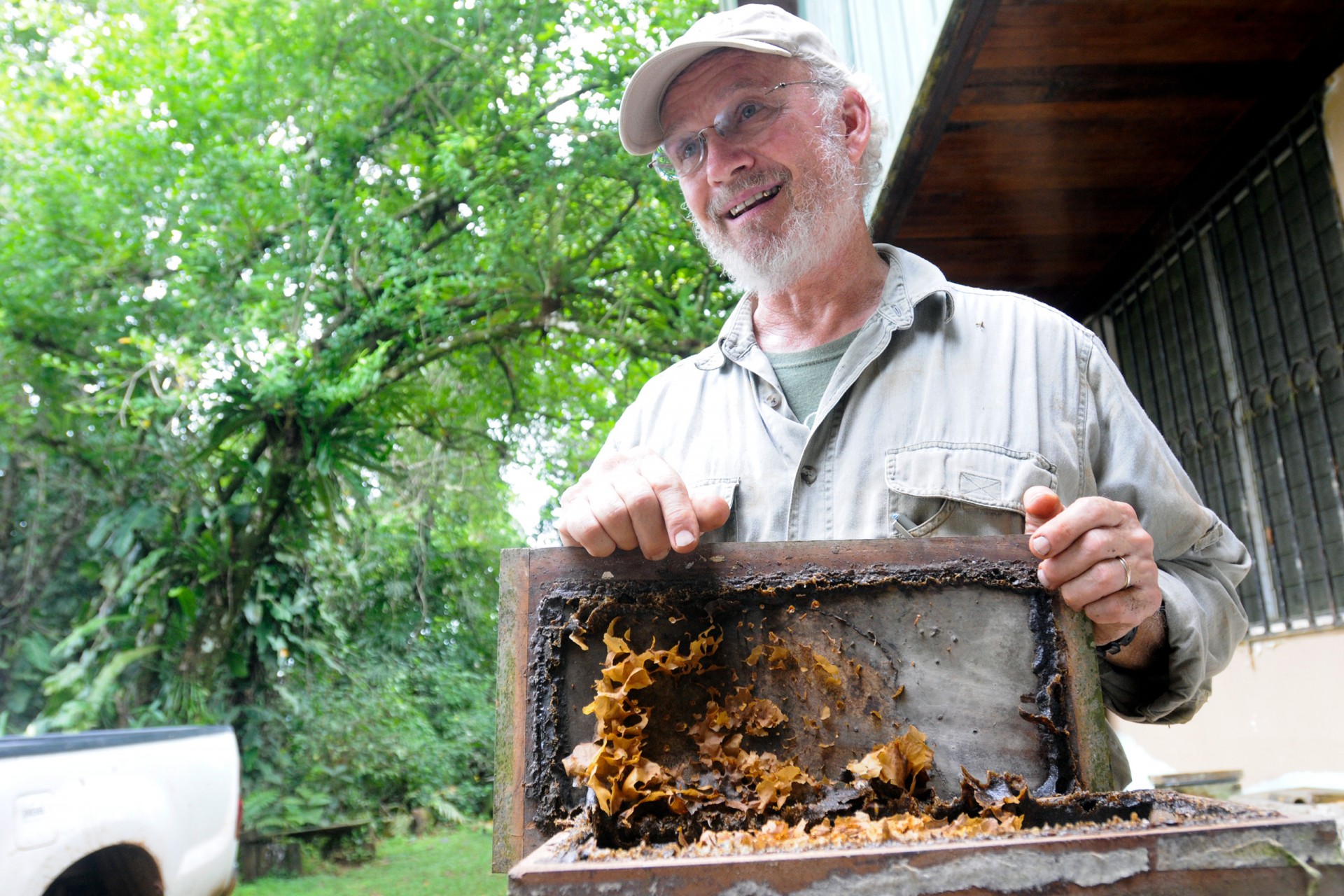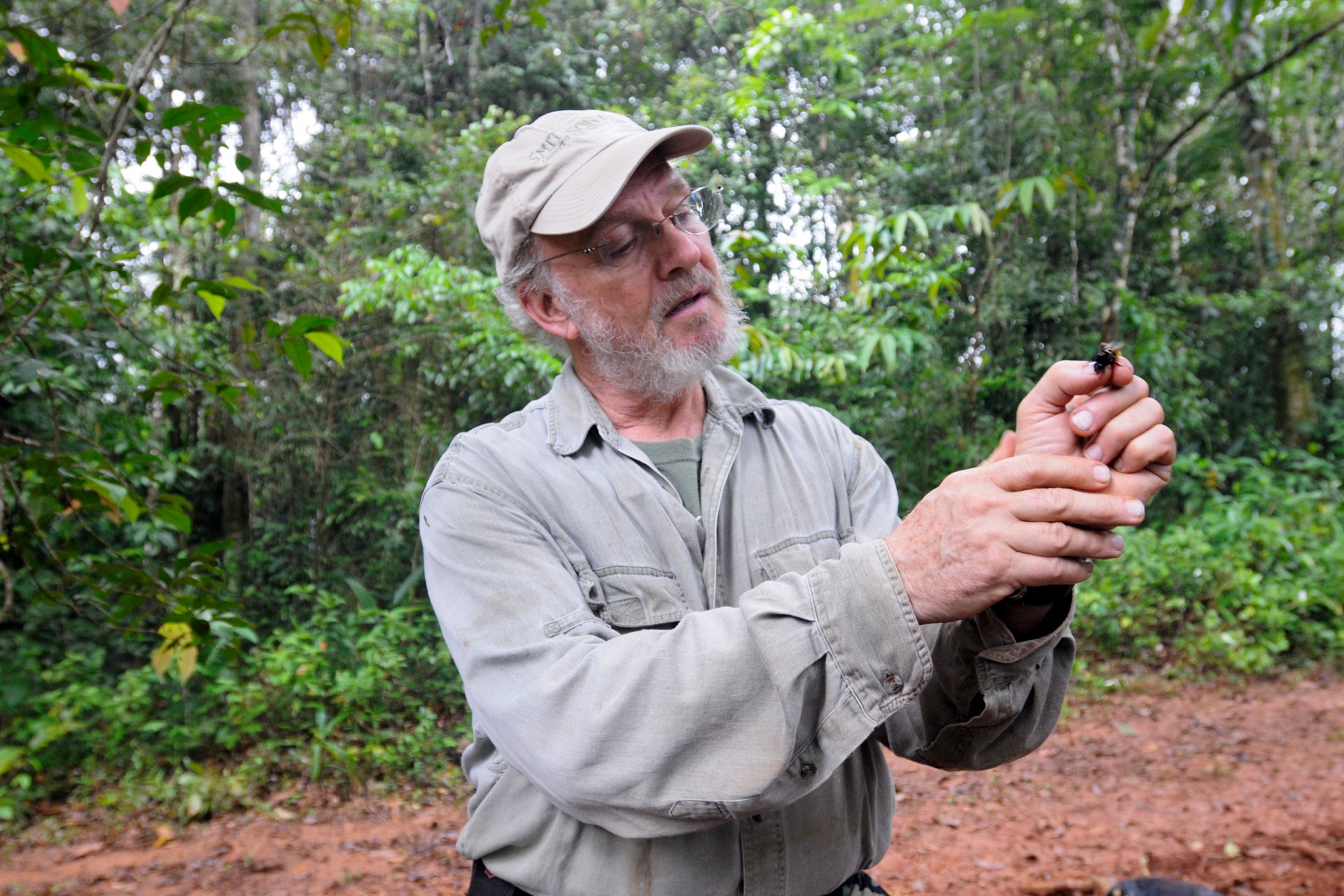Leafcutter ants have blind
spots, just like truck drivers
Save the
bees
Pollination guide aims to
avert global pollination crisis
The United Nations’ Food and Agriculture Organization (FAO) published a newly revised version of The pollination of cultivated plants: A compendium for practitioners, edited by STRI staff scientist, David Roubik. Its release this year coincides with the first World Bee Day, on May 20 and contributes to awareness of the importance of pollinators for food security and conservation and direct steps to save them.
The worst-case scenario is stark: Produce sections devoid of most fruits and vegetables. Gone are the bright red peppers and tomatoes. Empty are the shelves with leafy greens, carrots, eggplants, apples and berries. A few lonely tubers and some ears of corn remain.
A world without pollinators would be more than just an inconvenience for health-minded grocery shoppers. Bees and their allies are vital to food security and the fight against hunger, and to the maintenance of biodiversity and conservation of wildlands across the globe.
Yet the industrialized food systems that fill our supermarket shelves share some of the blame for the precarious situation pollinators find themselves in. Monoculture, uncontrolled pesticide use and clearing of natural habitats contribute to their global decline. Global climate change also could push some pollinators past their tipping points.
“Pollinators such as bees have been declining in diversity, if not abundance, ever since people began to replace their habitats with those suited for human use,” says Smithsonian scientist David Roubik. “Humans are largely responsible for this problem and, thus, might also be expected to remedy it. How to achieve this, however, is not yet exactly clear.”
The pollination of cultivated plants: A compendium for practitioners addresses the issue in both tropical and temperate climates. The two-volume guide replaces 1995’s The Pollination of Cultivated Plants in the Tropics published by the United Nation’s Food and Agriculture Organization (FAO). The original version had 12 contributing authors; this one has 80, underscoring the international relevance of pollination.
Since the 1995 edition, “the appreciation of pollinators has grown, alongside the realization that we stand to lose them. But our knowledge and understanding of crop pollination, pollinator biology, and best management practices has also expanded over this time,” the FAO explains.
Roubik’s introduction to the edition covers advances in the understanding of pollinators and pollination in the last two-plus decades. The inclusion of temperate zones is to demonstrate how large-scale reliance on beekeeping may be part of the solution for the tropics. Once-feared major declines in commercial bee populations in the United States, for example, have been avoided — but the tropics’ radically different climate poses major questions for the maintenance of biodiversity and the potential of wild bees to pollinate crops.
“While the situation in the temperate zone is being managed – more or less – this is often not the case in the tropics as far as pollinators and pollination are concerned. Economies in these regions are, therefore, especially vulnerable to pollinator declines,” says Roubik.
“A basic ecological turning point is approaching: the tropics are quickly losing a significant proportion of natural habitats, including a large part of the world's species, and routinely depend upon this often-underappreciated wildlife,” says Roubik.
The guide takes practitioners through the management of pollinators and pollination — with case studies designed “to get things done” in specific environments — and outlines proven research tools and techniques to meet the needs for effective scientific study of pollinators. Much research remains to be done on wild pollinators and their potential for supporting cultivars.
The search for new manageable pollinators — with the goal of increasing their abundance for both the pollination of crops and native flora — requires rigorous plans of research and experimentation. “To identify pollinators of both crop plants and native flora and to increase their numbers, requires rigorous research and experimentation,” says Roubik
“No pollinator or pollination service should be taken for granted,” he concludes.















